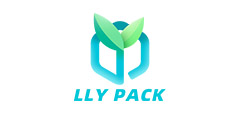In corrugated board production lines, poor corrugated board adhesion (bubbling, degumming, and spurious particles) has occurred from time to time. The reasons are many, such as the high moisture content of the base paper, the improper control of the amount of glue applied in production, and the quality of the adhesive. The adhesive mechanism of the adhesive is the first problem that should be solved. If one knows little or little about the adhesion mechanism of adhesives, then when poor adhesion occurs in production, it will be difficult to calmly deal with or do nothing, or to solve surface problems with surface phenomena, without grasping the nature of the problem. Complete cure. Therefore, the author elaborates on the adhesion mechanism of adhesives.
Although binders account for a very small percentage of the manufacturing cost of corrugated board, they play a decisive role in the quality of corrugated board. Therefore, on the formulation and quality control of adhesives, it has become a long-term research topic for experts at home and abroad.
There are many types of adhesives. Such as starch series adhesives, polyvinyl alcohol and so on. At present, most manufacturers use starch series adhesives. Starch adhesives have the following advantages over other adhesives:
1, strong adhesion, easy to penetrate into the paper to produce adhesion;
2, good initial viscosity;
3, easy to store;
4, sticky cardboard carton appearance is strong and flat, not easy to run, not easy to absorb moisture.
However, starch binders also have shortcomings in production such as long reaction time, difficult to control oxidation depth, unstable quality, complicated reaction process, etc. In addition, most manufacturers use mechanically oxidized starch to produce starch binders. The reaction conditions cannot effectively control and adjust the formulation, process and oxidation depth of the adhesive, which not only wastes raw materials, prolongs the reaction time, but also controls the quality of the adhesive and affects various properties of the corrugated cardboard. Therefore, in the use, only need to add water and adhesives, you can get pre-oxidized starch adhesive for corrugated paperboard bonding.
In fact, starch glues used in single-sided machines and double-sided machines are different even on the same production line. For the bonding of corrugated cardboard, the bonding mechanism is the prerequisite for the formulation of adhesives; and in terms of the quality of adhesives, viscosity and gel point are two important indicators to measure quality.
The bonding of the corrugating medium to the tissue paper is mainly the coagulation bonding of the starch binder, and it is supplemented by the osmotic adhesion and surface adhesion. The sizing penetrates the inner surface of the paper and the surface of the corrugating medium, and penetrates into the fiber gap of the paperboard to cause penetration adhesion. At the same time, the surface paper and the corrugating medium and the adhesive surface are formed with an adhesive between the adhesives, that is, the surface bonding is formed. The adhesive that penetrates the paperboard forms a collection with the adhesive on the paperboard surface. The adhesion between the molecules themselves is called cohesive bonding. The three bonds bond the tissue paper to the core paper.
Corrugated cardboard adhesive molding each step has a direct relationship with the adhesive bonding mechanism. The nature of starch is due to the fact that the starch molecules contain hydroxyls that are prone to chemical reactions, so the starch can react chemically with many substances. In the starch molecule, hydrogen bonds can be formed between hydroxyl groups on adjacent segments, thereby increasing the stability of the starch granules in the solution. In the process of using starch, it is always the first to destroy the structure of the pellet and cause swelling of the pellet. The hydration and dissolution of the starch molecules is generally referred to as gelatinization of the starch. The whole process of bonding is done on core paper with sufficient heat and humidity.
The adhesive applied to the peak gradually infiltrates, diffuses and penetrates into the paper fiber structure. The raw starch will rapidly gel at this time and the water will evaporate under the effect of high temperature, and finally reach full cure. When the five adhesion steps of the above-mentioned adhesion mechanism corrugated cardboard are the same, the best bonding effect will be obtained. If the adhesive gel is too fast, it will cause the glue to spread and infiltrate insufficiently to assemble on the surface of the cardboard and condense into crystals, causing false sticking of the cardboard; if the adhesive gel is too slow, there will be a lot of glue spread and Infiltrated into the peak of both sides of the sizing line and appeared white lines. At this time, the raw starch was unable to mature and lose its viscosity, resulting in poor adhesion of the cardboard.
It can be seen that finding the gel point of the adhesive will be the key to solving the adhesive effect of the paperboard. Due to the differences in the mechanism between the single-sided machine and the double-sided machine, it was decided that the adhesive formulation should be different. Under normal circumstances, single-side machine should choose the formula with low viscosity and high gel point; while the double-sided machine should choose formula with higher viscosity and lower gel point to meet the needs of cardboard adhesive forming. The reasons are as follows: In a single-sided machine, due to its unique sizing mechanism, it is determined that the bonding process is bonded and formed under high temperature and high speed conditions. In a moment, it needs to complete the coating and infiltration, and the bonding must be completed. Type 5 such adhesive molding steps. This requires single-side machine adhesives should be low viscosity and high gel point, in order to facilitate glue penetration and adhesion in an extremely short time.
On the double-sided machine, the time is longer and the glue applying mechanism is cold sizing, so the double-sided machine bonding process is completed at the room temperature under the adhesive molding. This requires that the double-sided machine adhesive should have a higher viscosity and a lower gel point to facilitate slow diffusion, gelation and adhesion. Under normal circumstances, the quality requirements for single and double-sided machine adhesives are shown in Table 1.
Index Single Face Machine
Gel Point/°C 60-61 57-58
Viscosity /S 12-15 15-18
System temperature/°C 35-38 36-38
The data in the table is not static. Because in the production process, the steam pressure and the production speed provided by the machine and the moisture content of the raw paper are constantly changing, so it is necessary to make timely and timely adjustments to meet the needs of each step of the adhesive forming, to achieve the best adhesion effect.
In summary, to solve the problem of poor adhesion of corrugated board, it is necessary not only to have a deeper understanding of the principle of bonding and forming of the board, but also to study the operating characteristics of the board production equipment in order to achieve the best The process plan achieves the best product quality and enables the cardboard production line to operate at high speed, high efficiency and high quality.
Reproduced from: China Corrugated Machinery Equipment Network












